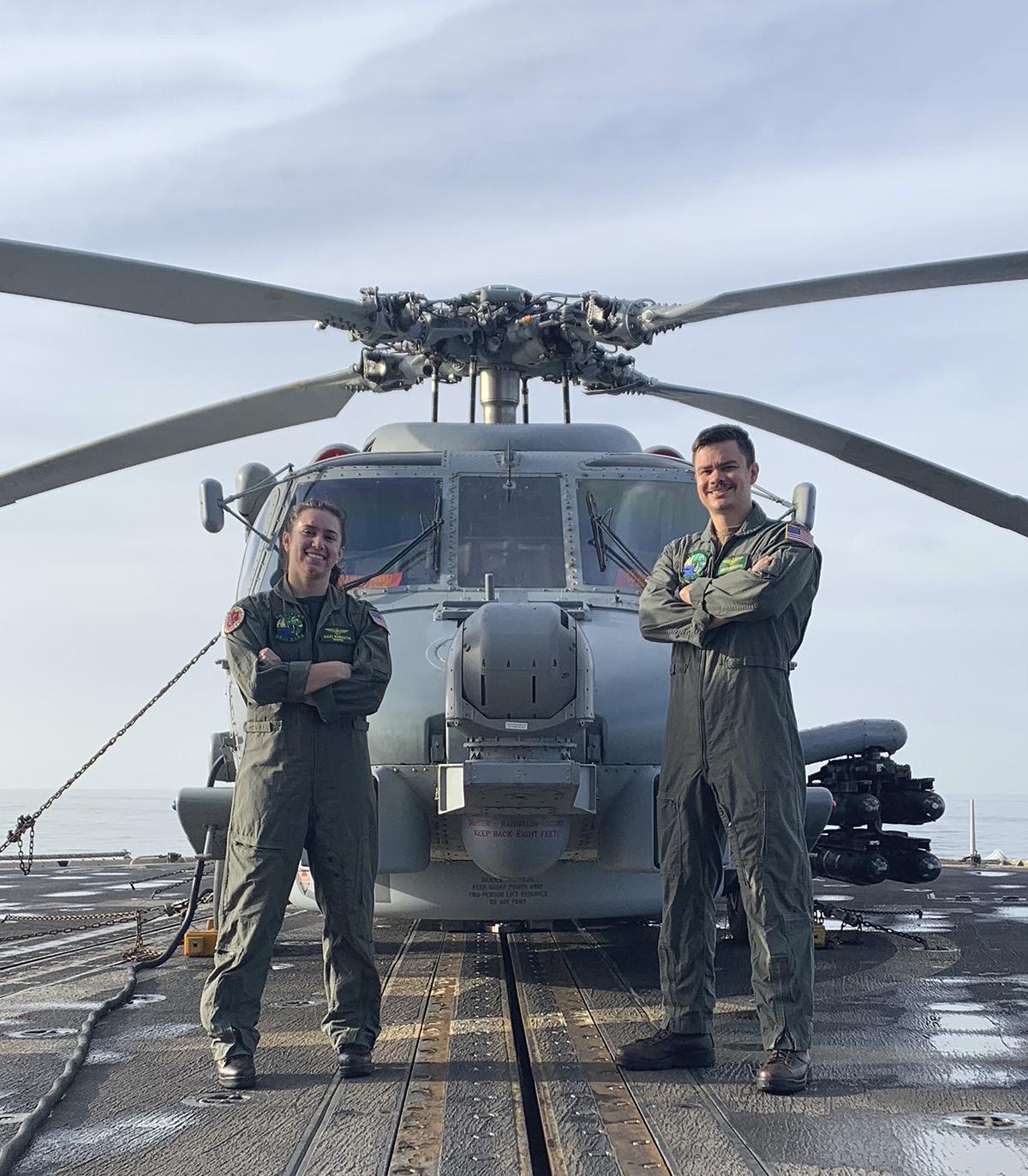View from the Cabin Empowering the Aircrew Mind
By AWS1(NAC/AW) Patrick M. Miller, USN he powerful and unique position of the Naval Aircrewman is an invaluable asset and investment Naval Leadership has made, and one we must not take for granted in cultivating. The skills required for Aircrew qualifications are more than just physical attributes and abilities. Identifying cognitive skills training, and expanding on the mission-focused mindset and knowledge-based growth capabilities of Aircrewmen are critical to the current and future of U.S. Naval Sea Power. Naval Sea Power through WWII had not evolved since the 16th century. with ships designed to take the fight to the enemy's shore in defiance of our rivals. The development of air capable assets to the naval inventory extended this ability inland and allowed the US Navy to step into the world dominant power it is today. This evolution, through our ability to develop newer and higher powered ships, Expeditionary Sea-Bases, and the up-and-coming Fleet of unmanned vehicles, points to the fact that our most important asset in the Fleet – our Sailors – must match naval innovation with increased cognitive capabilities. The modernization of the Aircrewmen is upon us, and it takes more than just a guy to ride in the back to accomplish the missions we have in our immediate future. Application of the multi-mission function for Aircrew is accomplished through constant and consistent training. We must have a mind willing to be hungry for the next level of training, developing the next piece of equipment, or next techniques and skills required to be the top dogs in the fight. Our needs are expanding from our medical training to national level Emergency Medical Technicians, Traumatic Combat Casualty Care, and rescue techniques to new weapons systems like the M134, MQ-8C and airborne mine hunting and neutralization systems, and even down to our own survival and safety gear with upgrades to our helmets and vests. Innovation raises the level of requirement for Aircrew to expand and think outside the box for training and to include new and modernized methods of cognitive approach learning. We experience the challenge twofold. The hunt for talent is the first hurdle, getting the individuals willing to accept the challenge of being a Naval Aircrewman, both physically and mentally. This requires ensuring the recruitment process and pipeline filters accurately understand our needs and then screen our new accessions to meet them. Responsibility for these accessions then falls to the training pipelines, which must ensure that students aren’t just passing to keep a “butt in a seat.” The pipeline must succeed in grooming the right mindset into our fighting force.
T
The latest generations of Aircrew are coming in already exposed to highly technical systems which we can capture and expand on for our needs. The adage of having more computing power in your pocket than the entire Apollo Space Program holds true. The issue is this: how do we utilize this Rotor Review #153 Summer '21
cognitive experiential knowledge with which these new Sailors come equipped? The upgrades for operational systems are not only vital, but our learning systems and our instructors will need to embrace them. The development of virtual training systems aligned with the Ready Relevant Learning Program is a key requirement that divisions within all training commands should be eager to employ. Expanding the capabilities of our systems creates the space for innovation to grow. Learning systems are essential for building the next generation of warriors in the Fleet, but how do we empower those of us already here? The Aircrew currently operating are a key resource for what we need, and their ideas need to be cultivated and brought to the table for discussion. All too often we have the feeling of a tiny voice that just isn’t heard in the bureaucracy of “Big Navy.” This job falls to our Fleet Aircrew leadership. Empowering the Aircrew mind is essential. This involves not just having systems that allow Sailors to provide feedback but also ignites the question of “what can we do to improve?” The capture of proficiency versus currency by the Weapons Schools as feedback must be included in identifying our training weak spots and then address them within ACTC and FRS Curriculum updates. The systems and equipment we use on a daily basis need to have fresh ideas and updates pushed back to their program offices to ensure we are on the forefront of our respective battle spaces. And nobody is in a better position than the Aircrews flying those systems to provide that feedback. The other hurdle looming exists within the Fleet. The challenge is in our own ability to ensure that our people are vested, willing, and eager to step into more advanced and modernized training that is required to maintain our postured position throughout the world. So, how do we know what we require? What is the justification to ensure that budgets match and allow for what we need? Making changes requires full participation in the Fleet. Operational squadrons are the forefront of knowing what is needed to complete the missions tasked, and knowing the battlespace in which they are operating. This information is critical to be fed back into the training pipeline in order to ensure that curriculums match. But, this does not simply concern current issues. There needs to be a Future Capabilities Capture that squadrons develop. To remain on the cutting edge, the technological advances we need for projecting power cannot be reactionary, and as such, our squadrons’ voices for these advancements must be louder than ever. Capturing that “Aircrew complaint” is the empowerment of the mind. Developing this culture within the Fleet is a must. Our leadership is willing to take on that challenge to empower everyone in all commands to open the discussion for what we need: the equipment and techniques to be better, faster, and stronger for the projection of sea power tomorrow. Work smarter, not harder – ignite the mental hunger! 12









































